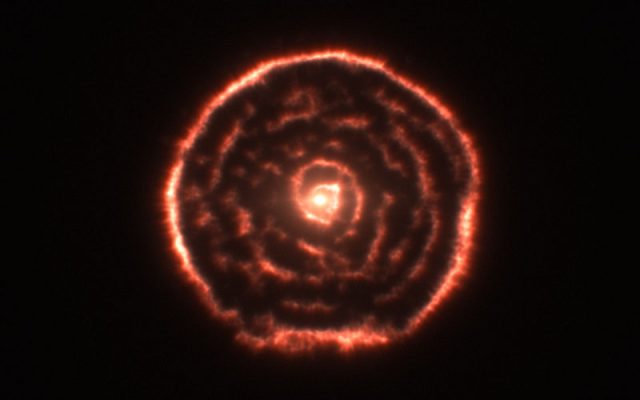New telescope array reveals death spiral of old star
Ars Technica » Scientific Method 2012-10-23

As stars like our Sun die, they swell to a huge size and shed much of the gas in their outer layers. This process seeds the galaxy with raw material for the next generation of stars and planets. Studying the last stages of stellar evolution helps astronomers model the process by which heavier elements are distributed through interstellar space (and incidentally provides some of the most beautiful astronomical images).
New observations of one of these dying stars revealed both a fascinating spiral structure in the ejected gas and that about three times the expected mass has been jettisoned into space. Astronomers using the Atacama Large Millimeter Array (ALMA) in Chile constructed a three-dimensional view of the giant red star R Sculptoris. Based on the strange spiral pattern, they concluded the star has or had an unseen companion that shaped the gas it ejected. This observation was part of what's only a preliminary run for ALMA, which won't even be completed until 2013.
Millimeter and submillimeter astronomy straddles the (admittedly arbitrary) boundary between the infrared and microwave portions of the spectrum. Light at these wavelengths punches through obscuring gas and dust, allowing astronomers to look into optically-opaque regions, such as the nebulas surrounding dying stars like R Sculptoris. (The star's name comes from its location in the constellation Sculptor, visible in the Southern Hemisphere.)
Read 6 remaining paragraphs | Comments